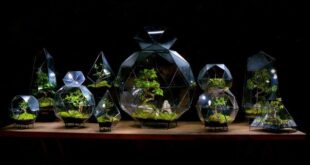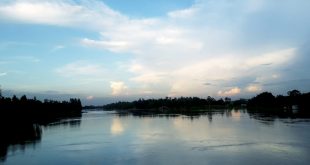The marine environment is an essential component of the global life-support system. Marine environment is different from the terrestrial and freshwater aquatic environment having high salt concentration. Its water covers approximately 71% of the earth’s surface. This is equivalent to 361 million sq. kilometers (139 million sq. miles).
- Average depth of the sea is 3700 meters.
There are broadly 2 ways in which organisms live in the sea.
- They float or swim in the water and
- They dwell on or within the sea bottom.
Elementary classification of the marine environment
Marine environment can be divided into two major divisions:
- Pelagic division
- Benthic division
Best safe and secure cloud storage with password protection
Get Envato Elements, Prime Video, Hotstar and Netflix For Free
Best Money Earning Website 100$ Day
#1 Top ranking article submission website
1. Pelagic division
It comprises the whole body of water forming the seas and oceans. On the basis of depth, Pelagic division may be divided into:
(a) Neritic province: The shallow water over the continental shelf is called neritic province.
(b) Oceanic province: The deep water beyond the continental shelf is called oceanic province.
On the basis of light penetration, the Oceanic province is divided into 3 zones:
(a) Epipelagic zone: From the surface up to 200 m zone. Very sharp light penetration occurs.
(b) Mesopelagic zone: From 200 m depth to 1000 m depth is mesopelagic zone. Very little light penetration occurs.
(c) Bathy pelagic zone: More than 1000 m depth. Virtually there is complete darkness.

(2) Benthic division
The entire sea bottom is called benthic division. It has three major zones:
(a) Littoral zone: The greater part of the shore is called littoral zone where there exists intertidal zone. However,
the meaning of littoral zone can extend well beyond the intertidal zone.
(b) Sub-littoral zone: Shallow sea bottom extending from the lower part of the shore to a depth of up to continental edge.
(c) Deep sea zone: Beyond the continental shelf is the deep sea zone. This is divided into three zones.
(i) Archibenthic zone: Between the continental edge and the depth of about 1000 m downwards.
(ii) Abyssal plain zone: if the depth is more than 1000 m then it is called abyssal plain zone.
(iii) Hadal zone: The deepest part of the ocean floor i.e. below 6000 m is Hadal zone.

Good to know
- The Challenger Deep in the Mariana Trench is the deepest known point in Earth’s oceans.
- The Challenger Deep at 10,994 meters (36,070 feet) below sea level.
- The depth is larger than the height of the Mount Everest.
Energy relationship in marine productivity
During CO2 fixation (photosynthesis), 673 KCal of light energy is involved for the synthesis of 1 gm mole of glucose.
CO2+ H2O + 673 KCal of light energy = C6H12O6 + O2
One gm mole of glucose is oxidized in respiration and then 673 KCal of energy is released.
This is by means of transfer and transformation of the energy of chemical compound formed initially by photosynthesis.
Gross primary production(GPP): Amount of light energy converted into chemical energy by photosynthesis per unit time (KCal/m2/year).
Net Primary production (NPP)= GPP – R
where R is Respiration, some energy used for cell respiration in the primary producers.
Primary production
The average amount of radiation energy coming on the surface of the earth has been given as 15.3×105 KCal/m2/year.
On the passage, much of this is absorbed or reflected by the atmosphere and varies from locality to locality.
For, Britain, the average figure is 2.5 x105 KCal/m2/year and this is considered as the energy on the sea surface in and around Britain.
Here, there are losses by reflection. In addition, on entering the sea surface the light is rapidly absorbed that causes heating.
It has been estimated that the amount of energy fixed by the phytoplankton varies from 0.1 to 0.3 percent of the
energy at the sea surface.
Taking the average value i.e. 0.2%, this gives the value of 0.002 x 2.5 x 105 = 500 KCal/m2/year.
This is equal to the synthesis of 0.74 gm [500/673] mole of glucose.
Phytoplankton will do respiration. It has been estimated that energy loss in plant respiration fall between 10 to 50%.
Taking the average value, the respiration loss from this system will be, therefore, 150 KCal/m2/year. Therefore, the NPP (Net primary production) will be 500-150 = 350 KCal/m2/year.
In phytoplankton, the proportion of organic matter is very high and 2 KCal energy/gm of
dry weight of phytoplankton cells has been considered. Therefore, the NPP becomes equivalent to 350/2=175 gm dry weight of phytoplankton.
One gm dry weight of organic mater is equivalent to 0.44 gm of carbon. Therefore, the NPP will be 175 x 0.44 = 77 gm of carbon.
Calculation of primary production in the Bay of Bengal
Question: In Bangladesh, the average amount of energy coming on the sea surface is 375 Cal/cm2/day. Calculate the NPP (Net Primary Productivity) of Bay of Bengal and express the result in KCal/m2/year in terms of carbon.
Solution
At first,
375 x 365
= 136875 Cal/cm2/year
= 1.37x105x104 Cal/m2/year
= (1.37×109)/103 Kcal/m2/year
= 1.37×106 Kcal/m2/year
=13.7×105 Kcal/m2/year
Taking the average 0.2% (0.1% to 0.3%)
= 0.002 x 13.7 x 105 KCal/m2/year [In case of 100, amount used is 0.2%, so total amount used is equal to (13.7 x 105)/100 = 0.002 x 13.7 x 105 KCal/m2/year)
= 2×102 x 13.7 KCal/m2/year
= 27.4 x 100 KCal/m2/year
= 2740 KCal/m2/year
This is equivalent to 4.07 g mole of glucose (Because, 2740/673 KCal)
Respiration uses 10-50%, so, on an average 30% energy is used.
Energy used up during respiration =822 Kcal/m2/year [2740 x30/100]
NPP = 2740 – 822 = 1918 KCal/m2/year
gm dry weight of organic matter in phytoplankton = 1918/2 = 959 gm
NPP in terms of C
= 959 x 0.44
= 421.96 gm of carbon
Factors affecting primary production
- Solar radiation: Quality (type) of light, quantity of light (sometimes too much light inhibit photosynthesis).
- Temperature: Temperature affects productivity (high temperature may denature enzymes).
- CO2: CO2 is an input.
- H2O: H2O is an input.
- Nutrients: Supply of nutrients also influence primary production.
 Plantlet The Blogging Platform of Department of Botany, University of Dhaka
Plantlet The Blogging Platform of Department of Botany, University of Dhaka




